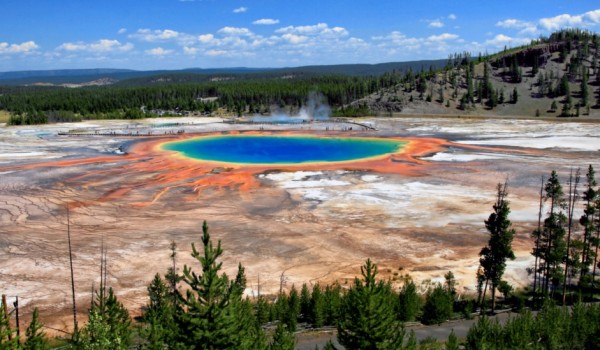By Ana Verayo, | March 26, 2016

The Yellowstone hotspot apparently caused numerous and more massive super eruptions than previously known.
Scientists believe that a series of violent volcanic events that occurred some eight to 12 million years ago were more massive than first thought, that later formed what is known today as Idaho, as these volcanic eruptions took place in Yellowstone.
A total of 12 volcanic eruptions circulate the region of Snake River Valley where scientists now claim that there are now more than half as many than first thought which, leads to a much larger number.
Like Us on Facebook
According to lead author of the study, Tom Knott from the University of Leicester Department of Geology's Volcanology Group, Yellowstone has been famous for catastrophic eruptions recently however, in this new study, there are also apparently numerous, equally powerful and destructive eruptions along the Snake River from Oregon to Yellowstone that date back to 16 million years ago to present day.
Knott explains that the size and magnitude of these newly discovered eruptions are larger and more colossal than the famous eruptions of Yellowstone, which are the first among many others that are emerging on record of super eruptions that occurred during a time of intense magma action some eight to 12 million years ago.
Researchers gathered a variety of evidence to investigate glass deposits that are found infused into the landscape where each of them possess distinct magnetic, mineralogical and chemical characteristics that are traced back to their origins. The team also obtained rock samples by drilling deep into ancient volcanic ash.
Scientists discovered that one of the super eruptions near Yellowstone's hotspot area that is known as the Castleford Crossing eruption, happened some 8.1 million years ago, revealing an eruption exceeding 1,900 cubic kilometers that is estimated to fill the entire Lake Ontario.
This means that the strength of this eruption registered an 8.6 on the Volcanic Explosivity Index, making it more than 100 times powerful than the Mt. Pinatubo eruption in the Philippines back in 1991 that registered a 6, which is 10 times more powerful than the Mt. St. Helens eruption in 1980.
This hotspot eventually found its way eastward into Yellowstone that created the Yellowstone Caldera from an eruption that occurred 640,000 years ago. Yellowstone's most recent eruption was 170,000 years ago and the last lava flow was about 70,000 years ago.
According to Bob Smith from the University of Utah who studied the geodynamics of Yellowstone in the last 60 years, this hotspot is now under the thicker North American Plate which means that it will take more explosive energy and heat to blow through the surface of the fractured Snake River Plain. He adds that it is also possible that Yellowstone might not have another super eruption anytime soon.
This new study is published in the journal Geological Society of America Bulletin.
-
Use of Coronavirus Pandemic Drones Raises Privacy Concerns: Drones Spread Fear, Local Officials Say

-
Coronavirus Hampers The Delivery Of Lockheed Martin F-35 Stealth Fighters For 2020

-
Instagram Speeds Up Plans to Add Account Memorialization Feature Due to COVID-19 Deaths

-
NASA: Perseverance Plans to Bring 'Mars Rock' to Earth in 2031

-
600 Dead And 3,000 In The Hospital as Iranians Believed Drinking High-Concentrations of Alcohol Can Cure The Coronavirus

-
600 Dead And 3,000 In The Hospital as Iranians Believed Drinking High-Concentrations of Alcohol Can Cure The Coronavirus

-
COVID-19: Doctors, Nurses Use Virtual Reality to Learn New Skills in Treating Coronavirus Patients







